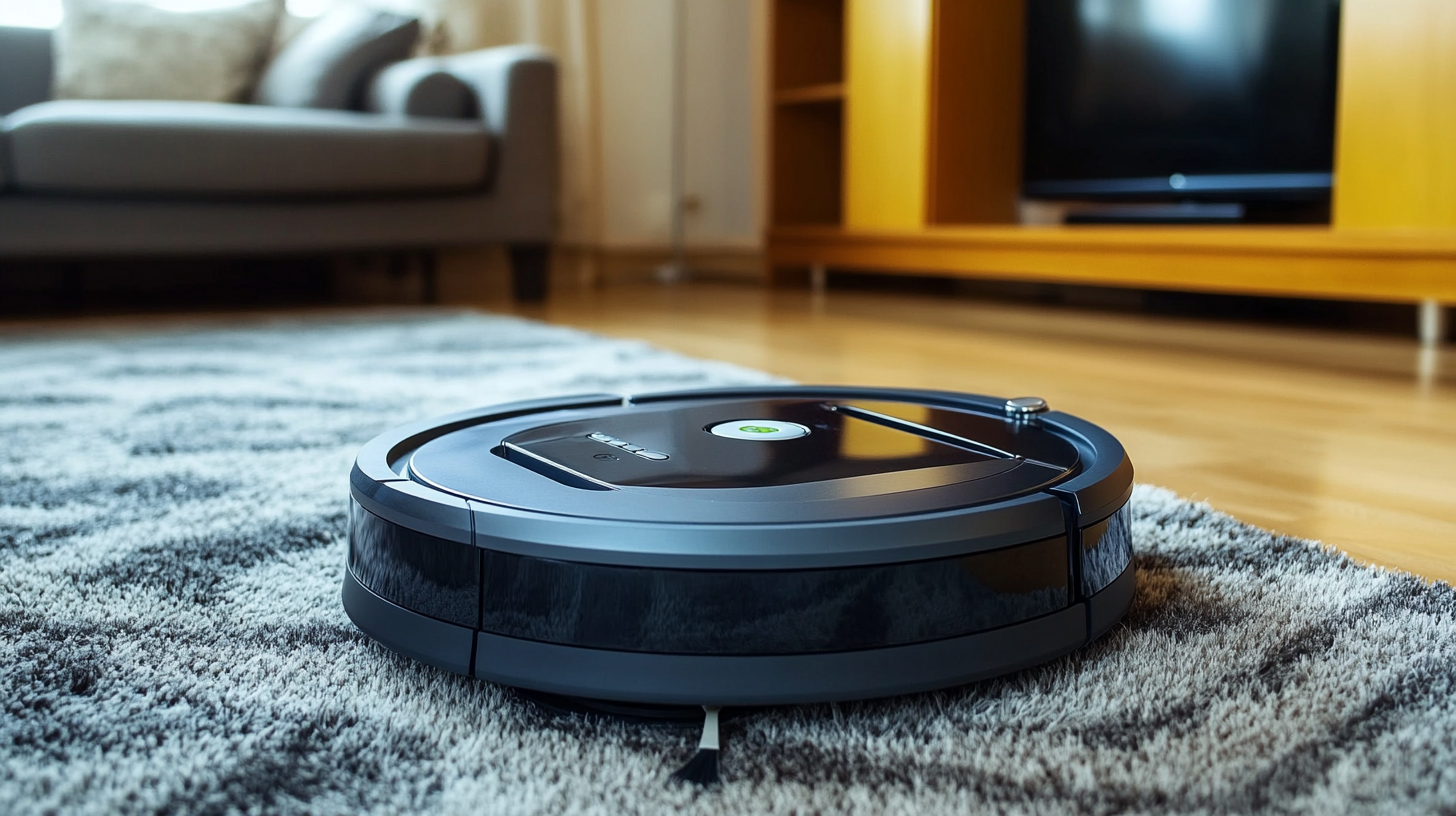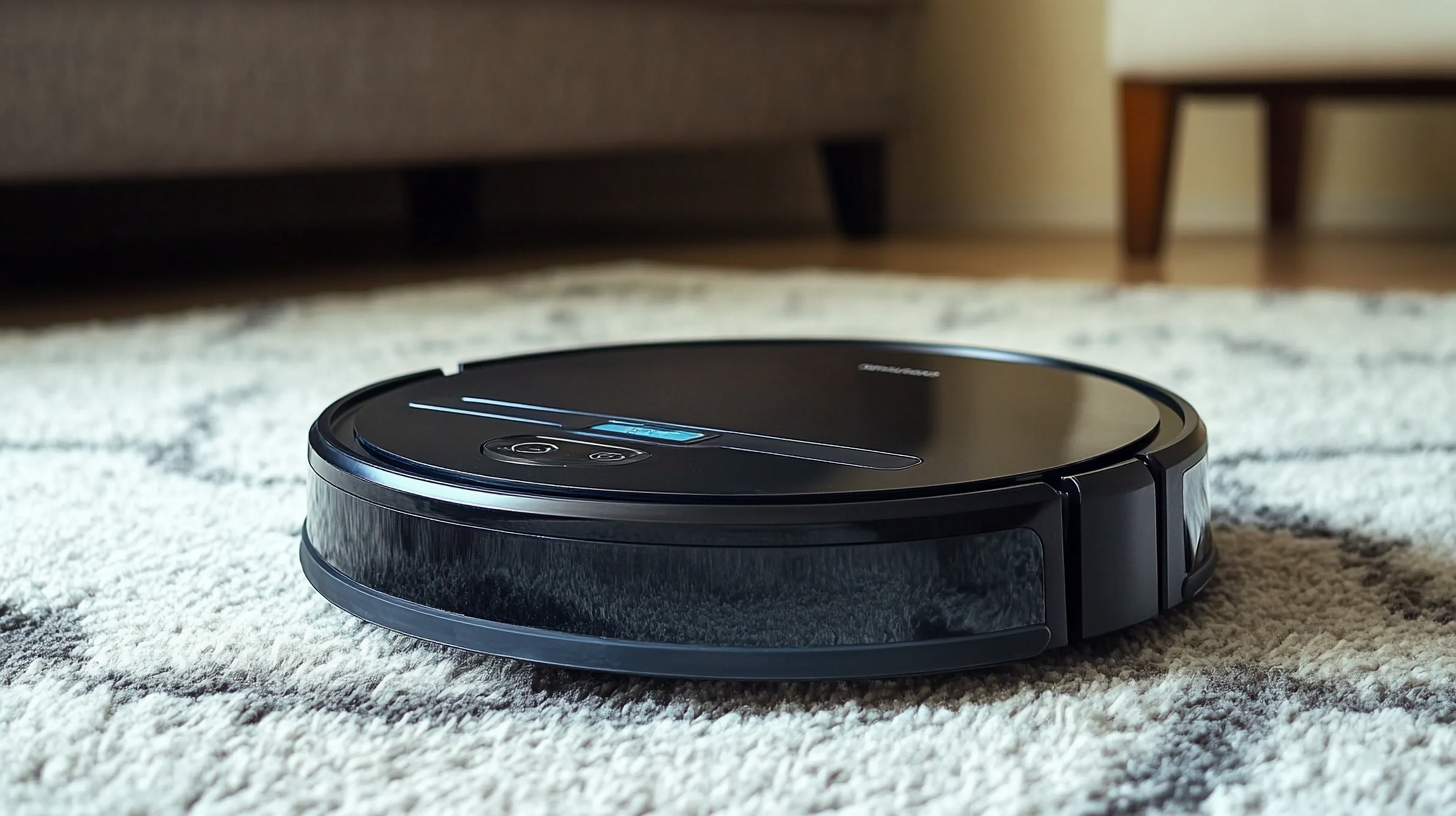In recent years, the popularity of the Robot Vacuum Cleaner has surged, transforming the way we approach home cleaning. According to a report by Allied Market Research, the global robotic vacuum cleaner market is expected to reach $8.1 billion by 2026, growing at a compound annual growth rate (CAGR) of 19.5%. This growth is driven by advancements in technology, with features like smart navigation, auto-scheduling, and powerful suction capabilities becoming increasingly standard among leading models. As consumers seek the best solutions for maintaining a clean home with minimal effort, understanding the key industry standards that define these devices is essential. This blog delves into the five pivotal standards that distinguish today’s top Robot Vacuum Cleaners, ensuring that you make an informed decision when selecting the perfect cleaning companion for your household.

 When considering the best robot vacuum cleaners for your home, several key design features can significantly enhance cleaning performance. According to a recent report from the International Cleaning Association, robot vacuums with advanced navigation systems can clean up to 40% more effectively than traditional models. These high-tech systems allow for efficient mapping of your space, ensuring that every nook and cranny is covered during each cleaning cycle.
When considering the best robot vacuum cleaners for your home, several key design features can significantly enhance cleaning performance. According to a recent report from the International Cleaning Association, robot vacuums with advanced navigation systems can clean up to 40% more effectively than traditional models. These high-tech systems allow for efficient mapping of your space, ensuring that every nook and cranny is covered during each cleaning cycle.
Another critical feature is suction power. Data from Consumer Reports indicates that models with adjustable suction settings can tackle a variety of surfaces, from carpets to hardwood floors, with increased efficiency. A robot vacuum with specialized brushes designed for pet hair also improves performance, making it a worthwhile investment for pet owners.
Tip: Look for models equipped with HEPA filtration systems to trap allergens and improve indoor air quality. Additionally, consider vacuums with self-cleaning capabilities, as they save you time and ensure optimal performance over longer periods. Investing in a robot vacuum with these industry-standard features will streamline your cleaning routine and deliver exceptional results.
As the robotic vacuum cleaner market continues to expand, innovative navigation technologies are at the forefront of enhancing their efficiency. Key advancements include visual navigation systems that allow these devices to map their surroundings in real-time, making them more effective compared to traditional laser-based approaches. This transformation in navigation technology paves the way for smarter cleaning patterns and greater adaptability to different home environments.
Moreover, with the projected market growth reaching nearly $75 billion by 2030, manufacturers are increasingly focusing on developing solutions that not only clean but also learn and improve their performance over time. Enhanced technologies are enabling these robots to avoid obstacles better, select optimal cleaning routes, and even recognize specific floor surfaces for tailored cleaning strategies. As robotic vacuum cleaners evolve, the integration of these essential navigation technologies is set to redefine home cleanliness, elevating user convenience and satisfaction.

When considering the best robot vacuum cleaners for your home, battery life and charging solutions emerge as key performance indicators. A report by Statista reveals that over 50% of consumers prioritize battery longevity in their purchasing decisions. This preference is rooted in the increasing demand for uninterrupted cleaning sessions, especially in larger living spaces where traditional vacuums may struggle. Advanced models now offer batteries that can last up to 120 minutes, allowing them to cover extensive areas without the need for constant recharging.
Moreover, charging solutions have evolved significantly, with the introduction of features like self-emptying docking stations and fast-charging capabilities. According to a Consumer Reports study, models equipped with rapid charging can rejuvenate their batteries to 80% capacity in just 30 minutes, a crucial feature for busy households. Additionally, some brands have integrated smart navigation technology to optimize their cleaning routes, which not only conserves battery but also enhances overall efficiency.
As consumers become more discerning about their home cleaning appliances, these technical advancements in battery and charging will undoubtedly influence future purchasing trends.
When it comes to selecting the best robot vacuum cleaners for your home, safety standards and reliability metrics are crucial factors that should never be overlooked. Modern robot vacuums are engineered to elevate cleaning efficiency while adhering to stringent safety guidelines. Certifications, such as UL (Underwriters Laboratories) and CE (Conformité Européenne), indicate that the vacuum has undergone rigorous testing to ensure it operates safely in domestic environments. These standards help ensure that the device will not overheat, short-circuit, or pose any electrical hazards, providing peace of mind for homeowners.
Reliability metrics also play a vital role in the performance of robot vacuums. The average lifespan, measured in operating hours, is an essential consideration for consumers. Robotics manufacturers often report MTBF (Mean Time Between Failures), indicating how often a unit is expected to require maintenance. Additionally, features like obstacle detection and firmware updates contribute to the overall reliability of the vacuum, ensuring it can navigate various home terrains effectively. Investing in a vacuum that meets these safety and reliability benchmarks guarantees not only a thorough cleaning experience but also enhances the long-term usability of your device.
| Standard | Description | Importance | Measurement Criteria |
|---|---|---|---|
| IEC 60335-2-2 | Safety standard for household and similar electrical appliances. | Ensures device safety during operation. | Electrical shocks, overheating tests. |
| RoHS Compliance | Restricts the use of hazardous substances in electronic equipment. | Protects consumer health and environment. | Lead, mercury, cadmium content analysis. |
| ISO 9001 | Quality management systems certification. | Assures quality in manufacturing processes. | Continuous improvement, customer satisfaction metrics. |
| ETL Listed | Certification mark for electrical equipment safety. | Validates product safety for use in North America. | Compliance with safety standards testing. |
| IEC 62133 | Standard for batteries used in portable applications. | Ensures battery safety and performance. | Battery performance, safety testing for electric devices. |
As smart home technology continues to evolve, user-friendly interfaces and seamless integration have become critical factors in evaluating the best robot vacuum cleaners for your home. These advancements in smart home platforms allow for intuitive control of devices, enhancing the user experience significantly. With the market for smart personal safety and security devices projected to grow from USD 41 billion in 2023 to USD 72.49 billion, it’s evident that homeowners are prioritizing comprehensive smart home systems.
To ensure optimal operation and convenience, here are a few tips: first, look for robot vacuums that feature voice control and smartphone app compatibility, allowing for remote operation and scheduling. Next, consider models that easily integrate with existing smart home hubs, facilitating the automation of cleaning tasks alongside other household duties. Finally, read user reviews to gauge the effectiveness of the interface, as real-world feedback can provide insights into which models truly deliver a seamless user experience.
As IoT-enabled systems gain traction in modern households, the ability to manage and monitor multiple devices from a single point, such as a smartphone app, is becoming increasingly desirable. Thus, investing in a robot vacuum that is not only efficient but also enhances your smart home ecosystem is a wise choice.
This bar chart illustrates the performance ratings of key industry standards for robot vacuum cleaners, focusing on user-friendly interfaces and smart home integration capabilities.